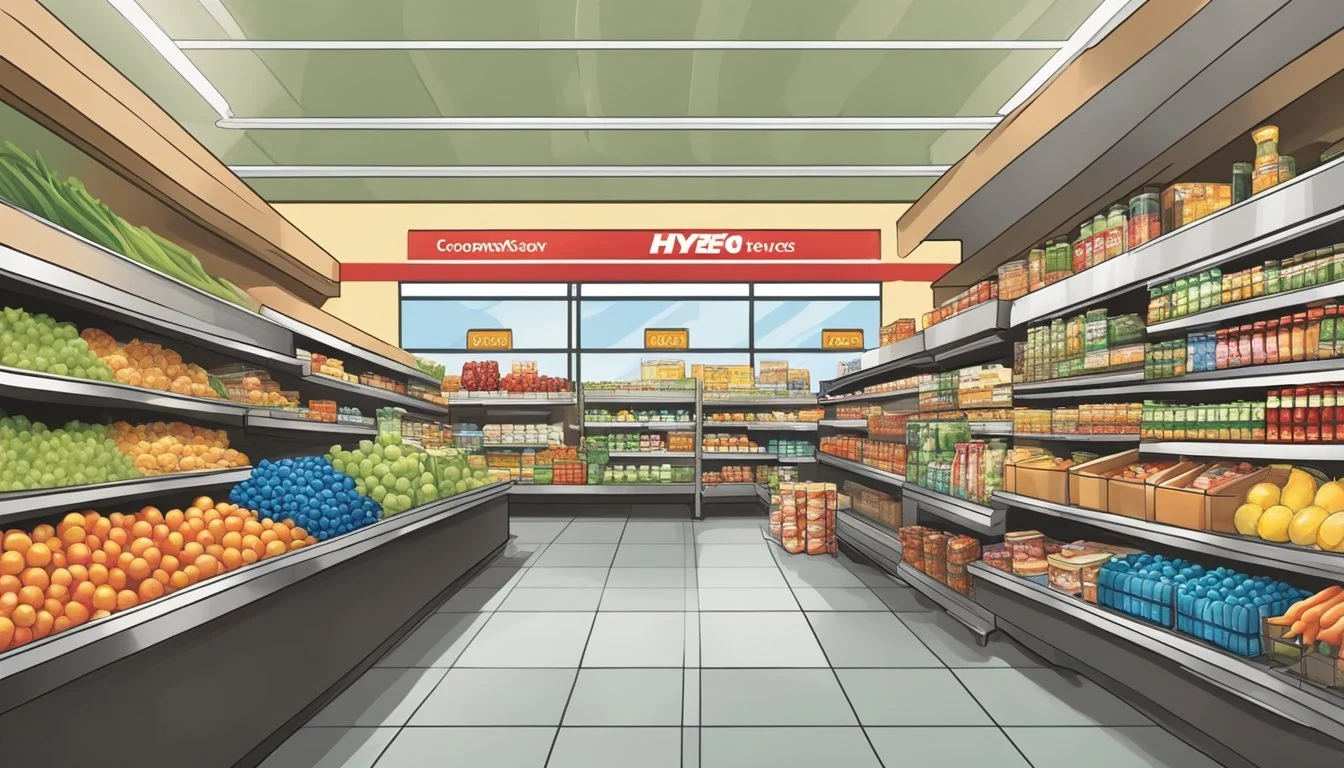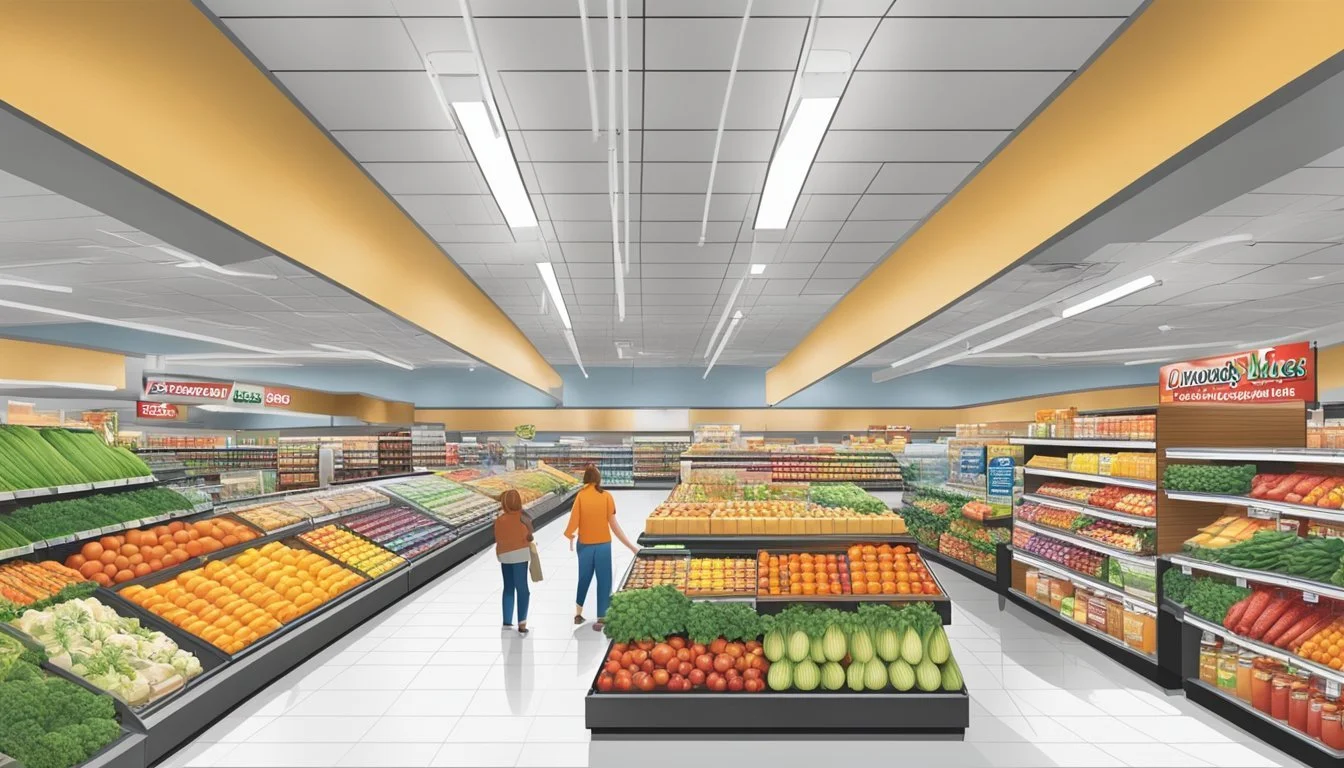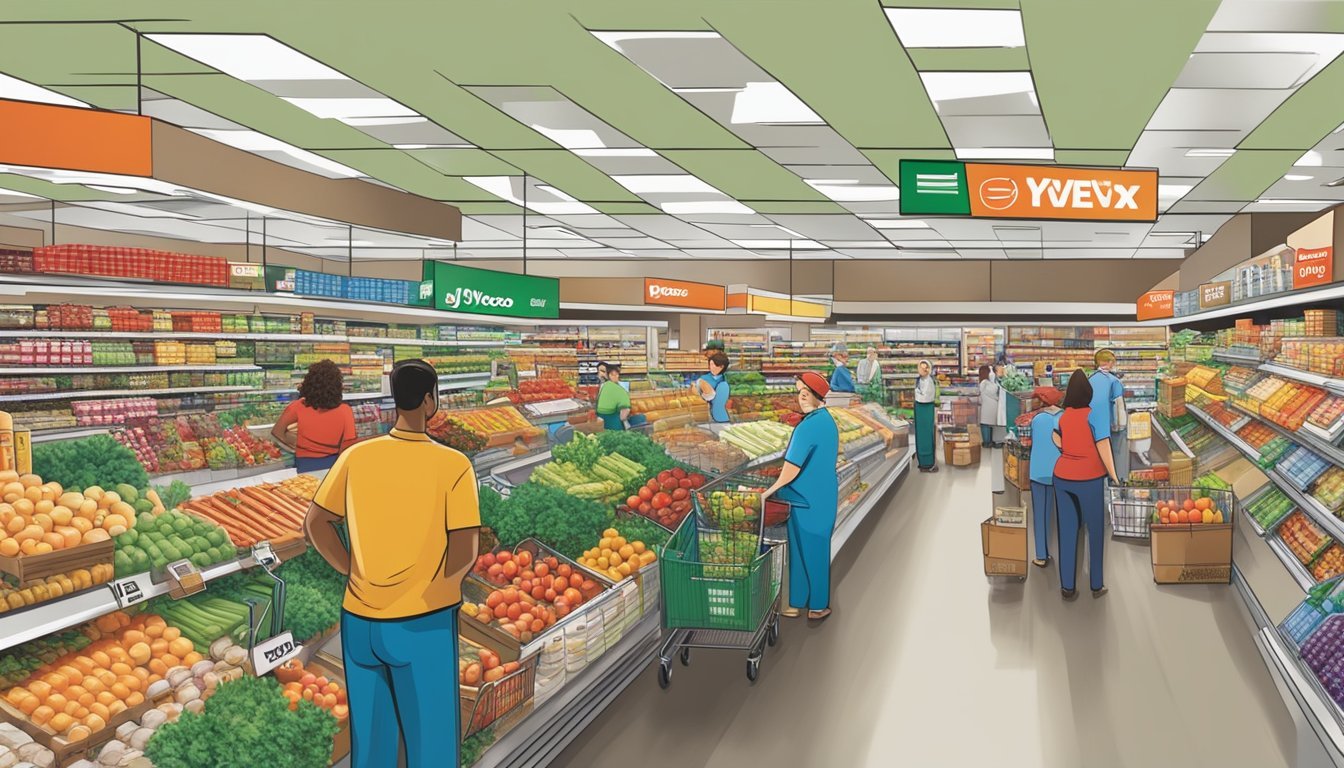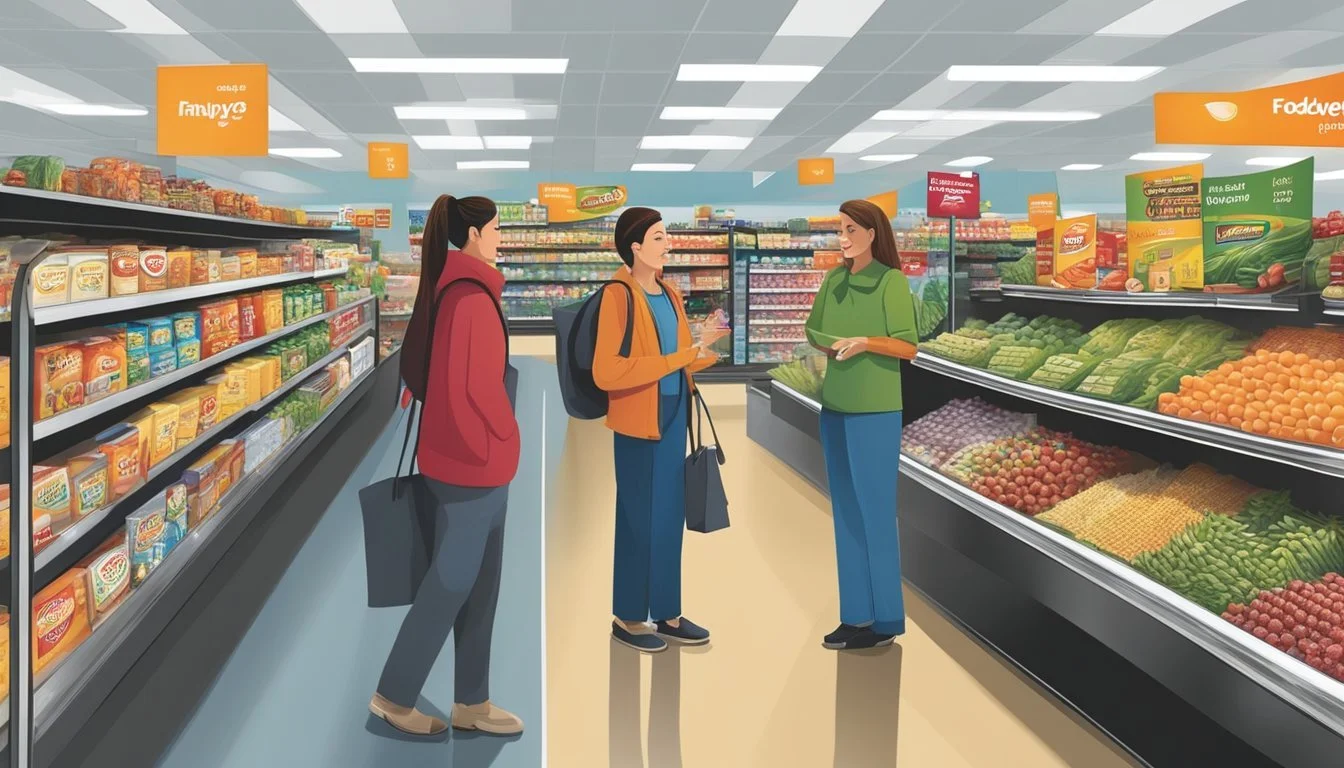FoodMaxx vs Hy-Vee
A Comprehensive Comparison of Prices, Quality, and Selection
When it comes to grocery shopping, choosing the right store can make a significant impact on your budget and overall satisfaction. FoodMaxx and Hy-Vee are two popular grocery chains that cater to different market segments and regions.
FoodMaxx is known for its no-frills approach and focus on low prices. The store operates primarily in California and Nevada, offering a wide range of products at competitive rates. FoodMaxx typically prices its items 20% lower than the average grocery store, making it an attractive option for budget-conscious shoppers.
Hy-Vee, on the other hand, is a Midwestern chain with a reputation for quality and customer service. While not always the cheapest option, Hy-Vee emphasizes fresh produce, in-store dining options, and a more upscale shopping experience. The chain has built a loyal customer base through its commitment to community involvement and personalized service.
Overview of FoodMaxx and Hy-Vee
FoodMaxx and Hy-Vee are two distinct grocery chains serving different regions and consumer segments in the United States. Their contrasting histories, expansion strategies, and business models cater to diverse customer needs.
Store History and Expansion
FoodMaxx began as a discount grocery chain in 1986, founded by Save Mart Supermarkets in California. It has since expanded to over 50 locations across California and Nevada. The chain focuses on providing low-cost groceries through a no-frills shopping experience.
Hy-Vee, founded in 1930 in Beaconsfield, Iowa, has grown into a major Midwestern supermarket chain. It now operates more than 275 stores across eight states: Illinois, Iowa, Kansas, Minnesota, Missouri, Nebraska, South Dakota, and Wisconsin. Hy-Vee's expansion has been steady and strategic, focusing on community integration and customer service.
Business Model and Target Market
FoodMaxx targets budget-conscious shoppers with its warehouse-style stores and limited-service approach. The chain offers a wide selection of products at discounted prices, often featuring bulk items and store brands. FoodMaxx stores typically have minimal decor and fewer amenities compared to traditional supermarkets.
Hy-Vee positions itself as a full-service grocery store with a focus on quality and customer experience. The chain caters to a broader market, offering:
Fresh produce and high-quality meats
In-store dining options
Health and wellness services
Extensive selection of organic and specialty foods
Hy-Vee's business model emphasizes community involvement and personalized service. The company's employee-owned structure contributes to its customer-centric approach and local market adaptability.
Assessment of Store Brands and Product Ranges
FoodMaxx and Hy-Vee offer distinct approaches to store brands and product selections. Both chains provide unique offerings to cater to different customer preferences and budgets.
Exclusive Labels and Store Brand Offerings
FoodMaxx focuses on providing budget-friendly options through its Smart Buy private label. This line covers a wide range of everyday essentials at competitive prices.
Hy-Vee, on the other hand, offers a more extensive array of store brands. Their Hy-Vee brand encompasses a broad selection of products across various categories. The company also features specialty lines like Good Graces for gluten-free items and Soléo Organics for organic products.
Hy-Vee's store brands often emphasize quality and healthier options. This approach appeals to health-conscious consumers willing to pay a bit more for perceived higher quality.
Variety and Quality of Produce and Meats
FoodMaxx typically offers a basic selection of fresh produce and meats. While the variety may be more limited, the prices are often lower than competitors.
Hy-Vee generally provides a wider assortment of fresh produce, including organic options. Their produce departments frequently feature locally sourced items when available.
In the meat department, Hy-Vee tends to offer a broader range of cuts and options. Many Hy-Vee stores have in-house butchers, allowing for custom cuts and specialized service.
FoodMaxx's meat selection is usually more standardized, focusing on popular cuts at budget-friendly prices. This approach aligns with their overall strategy of providing affordable options for cost-conscious shoppers.
Price Comparison and Value for Money
FoodMaxx and Hy-Vee employ different pricing strategies to attract customers. Both stores offer competitive prices and discounts, but their approaches vary in key ways.
Everyday Pricing and Sales Strategies
FoodMaxx focuses on consistently low everyday prices. They keep overhead costs down to offer savings across most product categories. Their no-frills approach means fewer sales but steadier pricing.
Hy-Vee takes a different tack. They run frequent promotions and weekly specials. Customers can find deep discounts on select items, especially with their Fuel Saver program. This rewards-based system can lead to significant savings for regular shoppers.
FoodMaxx tends to be cheaper overall, with prices averaging 21% below industry standards. Hy-Vee's regular prices are often higher, but savvy shoppers can match or beat FoodMaxx prices by timing purchases with sales.
Comparison of Common Items and Discounts
A basket of common grocery items reveals the pricing differences:
Milk: FoodMaxx $2.79, Hy-Vee $3.19
Bread: FoodMaxx $1.39, Hy-Vee $1.79
Eggs: FoodMaxx $1.89, Hy-Vee $1.99
Ground beef (1 lb): FoodMaxx $3.49, Hy-Vee $3.99
Hy-Vee offers more extensive discounts on specialty and premium items. Their loss leader strategy often includes high-quality meats and organic produce at competitive prices.
FoodMaxx excels in value brands and bulk purchases. Their larger package sizes often result in lower per-unit costs for staples and non-perishables.
Customer Experience and Service
FoodMaxx and Hy-Vee offer distinct shopping experiences, with notable differences in their approach to customer service and store environments. These factors significantly impact shopper satisfaction and loyalty.
Store Layout and Shopping Environment
FoodMaxx embraces a no-frills warehouse-style layout. Aisles are wide, with products often displayed in their original shipping boxes. This design prioritizes efficiency and cost-savings over aesthetics. Lighting tends to be bright and functional.
Hy-Vee stores feature a more polished appearance. They typically include well-organized departments with clear signage. Many locations offer amenities like in-store dining areas, pharmacies, and floral sections. The atmosphere is designed to be inviting and encourage leisurely shopping.
Hy-Vee's layout often incorporates specialized sections for health foods, gourmet items, and local products. This caters to a diverse range of customer preferences. FoodMaxx focuses on basic groceries and household essentials, with a more limited selection of specialty items.
Customer Service and Checkout Efficiency
FoodMaxx operates on a self-service model. Staff presence on the sales floor is minimal. Customers are expected to locate and select items independently. This approach can be challenging for shoppers needing assistance but allows for lower overhead costs.
Hy-Vee emphasizes customer service as a key differentiator. Employees are typically more visible and available to help with product inquiries or special requests. Many Hy-Vee stores offer additional services like catering, meal planning, and dietitian consultations.
At checkout, FoodMaxx often uses a "bag your own groceries" system to keep lines moving quickly. Hy-Vee provides full-service checkout lanes with baggers. Some Hy-Vee locations also offer self-checkout options for added convenience.
Hy-Vee's commitment to service has earned it high rankings in customer satisfaction surveys. The Consumerpedia podcast has highlighted Hy-Vee's customer-centric approach as a strength in the competitive grocery market.
Availability of Specialty Products and Services
FoodMaxx and Hy-Vee offer distinct selections of specialty products and services to cater to diverse customer needs. Their offerings in health-focused items and prepared foods vary significantly.
Health and Organic Selections
FoodMaxx provides a limited range of organic produce and health foods. Their selection typically includes basic organic fruits and vegetables, along with some popular health food brands.
Hy-Vee, on the other hand, boasts a more extensive organic and health food section. They offer a wide variety of organic produce, specialty health foods, and diet-specific products.
Hy-Vee's HealthMarket department features:
Gluten-free options
Vegan and vegetarian products
Supplements and vitamins
Natural beauty products
FoodMaxx focuses more on conventional grocery items, with fewer specialty health products available.
Prepared Foods and Deli Offerings
FoodMaxx offers a basic deli counter with standard cold cuts and cheeses. Their prepared food options are limited, usually consisting of rotisserie chickens and pre-packaged salads.
Hy-Vee excels in this area, providing a full-service deli and expansive prepared food options. Their offerings include:
Made-to-order sandwiches
Hot food bars with daily specials
Sushi stations in many locations
In-store restaurants in select stores
Hy-Vee's prepared foods cater to various dietary needs, including vegetarian and health-conscious options. They also offer catering services for events and gatherings.
FoodMaxx's prepared food selection is more basic, focusing on convenience rather than variety or specialization.
Convenience and Shopping Options
FoodMaxx and Hy-Vee offer different conveniences and shopping options to cater to diverse customer needs. Both stores have adapted to modern shopping trends, providing alternatives to traditional in-store experiences.
Grocery Delivery and Pickup Services
FoodMaxx partners with Instacart to provide grocery delivery services. Customers can order online and have their groceries delivered to their doorstep. The service is available in select areas where FoodMaxx operates.
Hy-Vee offers a more comprehensive range of delivery and pickup options. Their Aisles Online service allows customers to order groceries for delivery or curbside pickup. Hy-Vee also provides a "Mealtime To Go" service, offering prepared meals for pickup.
Both stores have implemented contactless payment options for added convenience and safety during in-store shopping.
In-Store Versus Online Shopping Experiences
FoodMaxx focuses primarily on the in-store shopping experience. Their stores are designed for efficient shopping, with a no-frills approach that keeps prices low. The layout is straightforward, making it easy for customers to find what they need quickly.
Hy-Vee offers a more diverse shopping experience. Their in-store experience includes additional amenities like in-store dining, pharmacies, and specialty departments. Online, Hy-Vee's website and app provide user-friendly interfaces for browsing products, creating shopping lists, and placing orders.
Hy-Vee's online platform also features recipe ideas and meal planning tools, enhancing the digital shopping experience. This integration of online and offline services gives Hy-Vee an edge in convenience and shopping options.
Reputation and Customer Loyalty
FoodMaxx and Hy-Vee have distinct approaches to building customer loyalty and maintaining their reputations. Both chains employ various strategies to attract and retain shoppers in their respective markets.
Brand Ratings and Consumer Loyalty Programs
FoodMaxx, as a discount grocer, focuses on providing low prices to build customer loyalty. The chain offers a no-frills shopping experience, appealing to budget-conscious consumers. While FoodMaxx may not have a formal loyalty program, its consistent low pricing strategy serves as a key driver for repeat customers.
Hy-Vee, on the other hand, has implemented a more comprehensive loyalty program. The Hy-Vee Plus membership, launched in 2020, offers subscribers exclusive benefits for $99 annually or $12.95 monthly. This program includes perks such as free delivery, fuel savings, and exclusive discounts, aiming to enhance customer engagement and retention.
Market Presence and Reputation
FoodMaxx operates primarily in California and Nevada, maintaining a regional presence. The chain's reputation centers on its commitment to offering affordable groceries without compromising on quality. This positioning has helped FoodMaxx cultivate a loyal customer base within its operating areas.
Hy-Vee boasts a strong reputation in the Midwest, where it's known for clean stores and excellent customer service. Consumer reports frequently highlight Hy-Vee's attention to cleanliness and customer satisfaction. The chain's expansion into digital shopping solutions has further solidified its standing as a modern, customer-centric retailer.
In trust rankings, Hy-Vee consistently performs well. It often appears in the top five most trusted grocery retailers in the Midwest, competing with larger national chains like Walmart and Kroger. This trust factor plays a crucial role in maintaining customer loyalty and attracting new shoppers.
Comparative Advantages
FoodMaxx and Hy-Vee offer distinct shopping experiences with their own sets of benefits and drawbacks. Each store caters to different customer needs through pricing, product selection, and services.
Pros and Cons of Shopping at FoodMaxx
FoodMaxx excels in providing low prices on groceries. It offers significant savings compared to average supermarket prices, with costs typically 20-21% below the all-store average. This can result in substantial yearly savings for families.
The store focuses on a no-frills shopping experience. FoodMaxx keeps overhead costs low by having customers bag their own groceries and using minimal decor. This approach allows them to pass savings on to shoppers.
FoodMaxx carries a wide variety of products, including both name brands and private labels. However, the selection may be more limited compared to full-service supermarkets. Fresh produce and meat departments are available, but specialty items might be harder to find.
One drawback is the lack of additional services. FoodMaxx typically doesn't offer features like in-store pharmacies or banking services found at some competitors.
Pros and Cons of Shopping at Hy-Vee
Hy-Vee is known for its focus on customer service and store amenities. Many locations offer in-store dining options, pharmacies, and even clothing departments, providing a one-stop shopping experience.
The store generally has higher regular prices compared to discount chains. However, Hy-Vee runs frequent sales and promotions that can bring costs down to competitive levels. Savvy shoppers who take advantage of these deals can find good value.
Hy-Vee excels in product variety and quality, particularly in fresh departments. Many stores feature large produce sections, full-service meat counters, and extensive bakeries. The chain also emphasizes health and wellness, offering a wide range of organic and specialty diet products.
A potential downside is that the additional services and amenities can make for a more crowded, busy shopping environment. This might not appeal to customers seeking a quick, streamlined grocery trip.
Conclusion and Recommendations
FoodMaxx offers consistently lower prices, with grocery costs approximately 21% below average. This makes it an excellent choice for budget-conscious shoppers seeking significant savings on their grocery bills.
Hy-Vee, while generally pricier, excels in product quality and store selection. Its prices hover around 4% below average, striking a balance between affordability and premium offerings.
For those prioritizing savings, FoodMaxx is the clear winner. Families can potentially save hundreds of dollars per month by shopping there regularly.
Consumers valuing a wider range of products, especially high-quality or specialty items, may prefer Hy-Vee. The chain's larger stores typically offer more diverse selections and brands.
Quality-conscious shoppers often gravitate towards Hy-Vee. The store maintains higher standards for produce freshness and meat quality compared to discount chains like FoodMaxx.
Ultimately, the best choice depends on individual priorities. Budget-focused shoppers will find FoodMaxx more appealing, while those seeking quality and variety may lean towards Hy-Vee.








